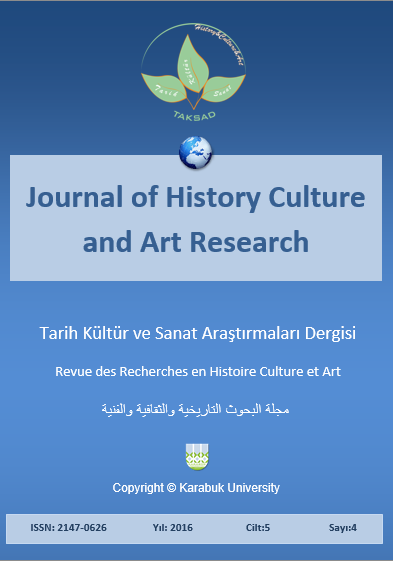Consideration of Climate Impact on Used Colors in Residential Architecture of Humid and Hot Regions
DOI:
https://doi.org/10.7596/taksad.v5i4.621Keywords:
Climate impact, color, humid and hot regions, residential architecture, color choice.Abstract
Consideration of architecture in humid and hot climate shows a beautiful and efficient intelligence in the back of architecture body. Fine arts would be considered from different perspectives in the issue of their color choice. Consideration of climate impact on used colors in residential architecture of humid and hot regions is the purpose of this writing. Descriptive approaches are used to understand theoretical history of the investigated subject in traditional architecture by applying objective observations. In addition, reasons of color choice on residential buildings in humid and hot environments are elaborated. While each color values next to other colors, companionship of different colors creates beautiful colorful contrast in little area with relative wide cob materials (middle brown). In addition, pacifying colors also are another reason for this mater. The results suggest that the beauty concept has the most important impact on traditional settlements of humid and hot regions.
References
Afshari, H. (2012). Design fundamentals in the hot and humid climate of Iran: the case of Khoramshahr. Asian Culture and History, 4(1), 65.
Akhlaghiketabi, F., Dehghantezerjani, M., & Alizadeh, S. (2014). Study of thermal comfort in hot and humid climates: a case study of Qeshm. Advances in Environmental Biology, 30-35.
Assari, A., & Assari, E. (2012). Urban spirit and heritage conservation problems: case study Isfahan city in Iran. Journal of American Science, 8(1), 202-109.
Assari, A., & Mahesh, T. (2011a). Demographic comparative in heritage texture of Isfahan city. Journal of geography and regional planning, 4(8), 463.
Assari, A., & Mahesh, T. (2011b). Urbanization Process in Iranian Cities. Asian Journal of Development Matters, 5(1), 151-154.
Assari, A., Birashk, B., Nik, M. M., & Naghdbishi, R. Impact of Built Environment on Mental Health: Review of Tehran City in Iran.
Assari, A., Mahesh, T., & Assari, E. (2012a). Conservation of historic urban core in traditional Islamic culture: case study of Isfahan city. Indian Journal of Science and Technology, 5(1), 1970-1976.
Assari, A., Mahesh, T., & Assari, E. (2012b). Role of public participation in sustainability of historical city: usage of TOPSIS method. Indian Journal of Science and Technology, 5(3), 2289-2294.
Delfani, S., Pasdarshahri, H., & Karami, M. (2012). Experimental investigation of heat recovery system for building air conditioning in hot and humid areas. Energy and Buildings, 49, 62-68.
Deputy, M. (2007). Certain cultures, Publisher: Negarestan e ketab.
Elliot, A. J., & Maier, M. A. (2014). Color psychology: Effects of perceiving color on psychological functioning in humans. Annual review of psychology, 65, 95-120.
Ethan, Johansen (2013). Coloring book, translated by Mohammad Hossein Halimi, Publisher: Ministry of Culture and Islamic Guidance, Printing and Publishing.
Ghobadian, (2005). "The climate Iranian traditional structures", published by Tehran University, Tehran, Third Edition.
Kasmaee, M. (2010). Climate and architecture, Publisher: Khak.
Lenzholzer, S., & Brown, R. D. (2013). Climate-responsive landscape architecture design education. Journal of Cleaner Production, 61, 89-99.
Muhaisen, A. (2006). “Shading Simulation of the Courtyard Form in Different Climatic Regions”. Building and Environment, Vol. 41, pp. 1731- 1741.
S. Fallah oven (2010). Glossary of traditional Iranian architecture, publishing: Explore ATMs.
Zomarshidi, H. (2010). "Iranian architecture building shell with traditional materials", the eleventh edition, Tehran, Zomorod Publications.
Downloads
Published
How to Cite
Issue
Section
License
All papers licensed under Creative Commons 4.0 CC-BY.- Share — copy and redistribute the material in any medium or format
- Adapt — remix, transform, and build upon the material for any purpose, even commercially.
Under the following terms:
Attribution — You must give appropriate credit, provide a link to the license, and indicate if changes were made. You may do so in any reasonable manner, but not in any way that suggests the licensor endorses you or your use.
- No additional restrictions — You may not apply legal terms or technological measures that legally restrict others from doing anything the license permits.







